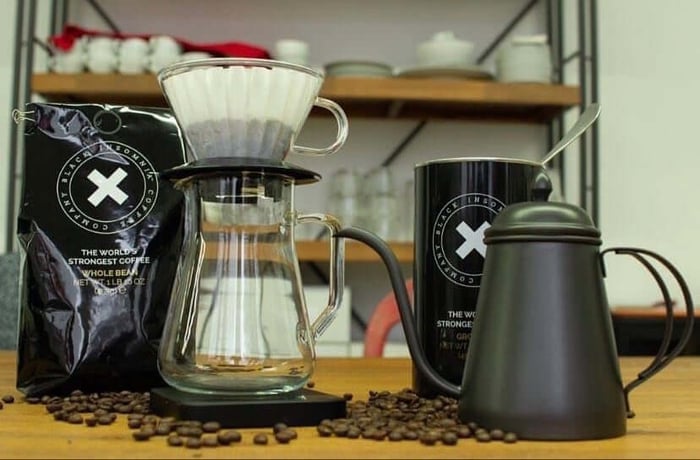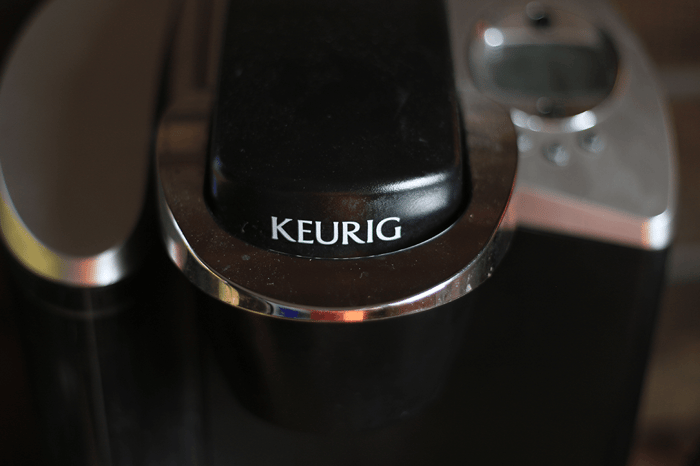
For an authentic Greek coffee experience, you’ll want to serve each coffee with some cold water in a separate glass. So if you want to do it right, make sure you have some glasses and cold drinking water ready to go when you’re finished brewing.
Ingredients
- Coffee
- Sugar (optional)
- A briki (or cezve) pot
- Espresso or Demitasse cups
Instructions
- Grind your coffee beans to a fine consistency if you’re not using pre-ground coffee.
- Fill your espresso or demitasse cup full with cold water (this should be approximately 2 oz), then pour the water into the briki.
- Add in your preferred amount of coffee and sugar and stir the mixture well. (Refer to the chart below under the heading Types of Greek Coffee for example ratios of coffee and sugar you can use)
- Place the briki over medium-low heat, then stir it just a couple more times.
- Once the coffee heats up and starts to foam, take the briki off the heat until the foam settles, then place it back on the heat.
- When the coffee foams a second time, remove it from the heat (before it boils).
- Pour out coffee into serving cups and let it rest there for up to 5 minutes, or until the temperature is comfortable for drinking and the coffee grounds have settled on the bottom.
Remember to sip Greek coffee slowly, and serve it with a glass of cold water as a palate cleanser. This’ll help you fully immerse yourself in the experience and appreciate the aromas and flavor notes of the coffee.
Types of Greek Coffee
If you like a sweeter cup of coffee, you’ll be glad to know there are no Draconian laws about adding sugar or sweeteners to Greek coffee.
Part of the Greek coffee tradition is that it’s always prepared according to the enjoyers’ personal preference. (Isn’t that the way all coffee should be prepared?) There are four main types of Greek coffee based on the level of sweetness:
- Sketos (Plain) – If you like your coffee without sugar, use only 1 heaping tsp of coffee per cup
- Metrios (Medium) – 1 heaping tsp coffee, 1 tsp sugar per cup
- Glykos (Sweet) – 1 heaping tsp coffee, 2 tsps of sugar per cup
- Vary glykos (Extra Strong and Extra Sweet) – 3 tsp of sugar and 2 heaping tsp of coffee per cup
Note: I haven’t heard anyone explicitly say you can’t add creamer to Greek coffee if you want to, so I’ll let someone correct me on that if that’s a “no-go.” That being said, I haven’t seen milk or creamer brought up when discussing Greek coffee, either.
If you normally can’t drink your coffee without some kind of creamer, and you value authenticity more than your personal enjoyment, maybe leave the cashew milk in the fridge this round, just to be safe.
(I bet it’s fine, though—you might just miss out on the more subtle flavors of the coffee, but subtlety isn’t for everyone).
Greek Coffee vs. Turkish Coffee
If you’ve ever made Turkish coffee, the instructions above might feel slightly familiar to you.
Psst… I’m going to let you in on a little secret.
Don’t tell anyone I told you this, but…
Greek Coffee and Turkish Coffee are basically the same thing.
That is, if you were in Greece, you would call this a recipe for Greek Coffee. If you were in Turkey, you’d call this Turkish coffee.
There are some small regional differences:
For example, in Turkey, the coffee tends to be stronger, and in Greece, the foam tends to be thicker.
In Turkey, the pot is called a cezve; in Greece it’s called a briki or ibriki.
Are those differences enough to call them two different kinds of coffee?
Maybe.
That’s nobody’s business but the Turks’… (and the Greeks’, of course.)





